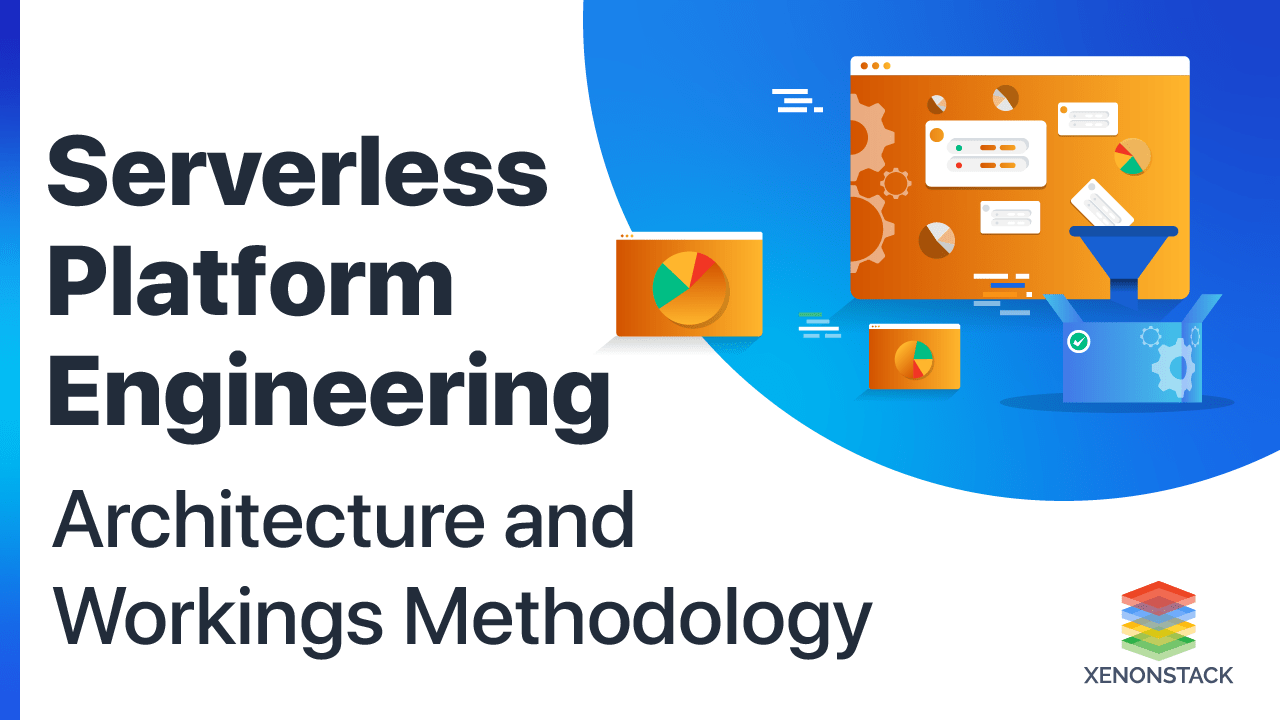
Overview of Platform Engineering
Platform engineering is a new technology approach that can speed up application delivery and the rate at which business value is created. It improves the developer experience and productivity by providing self-service with automated infrastructure operations.
It involves creating the underlying infrastructure and architecture for a platform and defining the interfaces and APIs that allow other developers to build applications or services on top of the platform.
Serverless allows developers to write code and build and run applications without any worries about managing the servers. Click to explore about our, Serverless Platform Engineering
This can include designing and implementing security, scalability, reliability, and other key features that are essential for a successful platform. It also involves maintaining and updating the platform over time, including fixing bugs, adding new features, and integrating with other systems or technologies. This can require close collaboration with other teams and stakeholders, such as product managers, designers, and users.
It is a new discipline that has emerged in response to the increasing complexity of modern cloud-based architectures. It outlines the process of creating and upholding an integrated product known as an "Internal Developer Platform," which serves as a supportive and adaptable layer of abstraction between developers and the supporting technologies of their applications.
Problem
-
The team wastes 25% of their operating apps as that complexity increases.
-
The average architecture of a modern cloud-native application consists of 25 times more components than its equivalent ten years ago. To meet the scale, the toolchain requires five times more specialized tools.
Why is Platform Engineering important?
Platform engineering simplifies operations and streamlines the development process, offering powerful tools to overcome the challenges and inefficiencies that arise when building large-scale, cloud-based applications.
Let's dive into the significance of Platform Engineering:
Application developers
-
They want self-service capabilities with a lower cognitive load.
-
They do not want to be abstracted from context without disrupting workflow.
Platform engineering /SRE teams
-
They work together to find efficient solutions throughout the entire organization and connect the various toolchains and processes into streamlined, optimal pathways. This Internal Developer Platform serves as an integrated product that caters to the technical needs of the program throughout its lifespan.
-
Their goal is to standardize processes to simplify maintenance and reduce the number of ticket operations tasks.
The three main pillars of Platform Engineering Teams
-
Improve developer experience by creating an Internal development platform to reduce developer work and repetitive manual labor.
-
Platforms do not adopt a specific set of tools or approaches. It's about making it easier for developers to create and distribute software without neglecting the useful and distinct capabilities of the underlying core services.
-
Platform engineering teams treat the platform as a product (used by developers) and design the platform for self-service use.
A self-service layer that encompasses technologies and tools that allow developers to engage with their organization's delivery configuration independently. Click to explore about our, Internal Developer Platform
Top 10 Fallacies in Platform Engineering
In the realm of Platform Engineering, misconceptions can risk the efficiency of software systems. Highlighting the top 10 fallacies, offering insights into common mistakes.
Addressing these fallacies is crucial for building resilient and high-performing platform architectures.
-
One size-fits-all fallacy
Assuming that a single platform or technology will meet an organization's or project's needs.
-
Build it, and they'll come fallacy
Believing that simply building a platform will automatically attract users or customers.
-
Everything is a service fallacy
Thinking that every aspect of a platform should be delivered as a service rather than considering the trade-offs and costs of this approach.
-
Vendor lock-in fallacy
Believing that using a single vendor's technology will always be the best choice without considering the costs and risks of vendor lock-in.
-
Underestimating maintenance fallacy
Failing to budget and plan for the ongoing maintenance and support required for a platform.
-
Optimize for the average fallacy
Designing a platform to meet the average user's needs without considering the needs of outliers or edge cases.
-
We can do it ourselves fallacy
Believing that an organization has the in-house expertise and resources to build and maintain a complex platform without considering the costs and risks of this approach.
-
Not invented here fallacy
Rejecting existing platforms or technologies simply because they were not developed in-house.
-
Perfect is the enemy of the Good fallacy
It is when a platform is not launched because it is not perfect rather than recognizing the value of continuous improvement and iteration.
-
Security through obscurity fallacy
Believing that security can be achieved simply by keeping a platform's design or implementation secret rather than through robust security practices and controls.
What is an Internal Developer Platform?
The IDP is the sum total of all the technologies and tools the Platform engineering team combines to open up the golden path for developers. Internal Developer Platform reduces the cognitive load in the technical organization and allows developers to self-serve without abstracting the developer's context or making the underlying technology inaccessible. A well-designed IDP follows a platform-as-product approach, where the team builds, maintains, and continuously improves the IDP, following product management principles and best practices.
An IDP outlines the following principles:
-
Orchestration of infrastructure
-
Configuring an application
-
Management of deployment
-
Environmental Management
-
It increases developer productivity and speed.
How can the Internal Developer Platform help?
1. Standardization by design
Dynamic Configuration Management not only differentiates the environment-agnostic from the environment-specific configuration elements but also shares the workload and infrastructure profiles across multiple workloads/apps or teams. This significantly limits the difference between configurations. Individual contributors focus on the exact abstract workload specification (only one specification per workload) that is the same across all environments. Platform teams can manage workload profiles, infrastructure profiles, and resource pairing.
This way of working leads to the standardization of all configuration components from the design stage. Even security reviews are faster because they only need to be done once to get fresh content from a pre-tested template.
2. Reduce maintenance costs
Additionally, introducing a standardized configuration generation method eliminates the randomness of manual "change by change" configurations. This significantly reduces the cost of maintaining and documenting existing setups.
3. Reduce change failure rate by eliminating configuration drift
The abstract workload specification remains exactly the same across all environments. This makes it difficult to get the workload running in production to connect to the test database (though arguably impossible).
4. Without abstracting
Instead of processing and analyzing every file in the application, developers can choose to stay "high" on the abstract specification of the workload. They can also drill down to the Workload Profile and Infrastructure Profile levels at any time, allowing them to move quickly without losing context.
5. Reduce cognitive load for developers
The approach allows developers to manage all the depths of configurations, from images to assets, resulting in much slower virtual delivery and operations. The recent DevOps benchmark report paints a good picture. Dynamic configuration management gives developers complete flexibility with minimal overhead. Even configuration breaks between on-premises and cloud can be eliminated by automatically resolving the workload configuration.
Conclusion
The rise of platform engineering and the adoption of Internal Developer Platforms (IDPs) have revolutionized the way engineering teams, both large and small, approach software development and deployment. This new paradigm allows organizations to create more efficient, scalable, and secure environments for building and releasing software. By treating the platform as a product, platform engineering teams focus on enhancing developer experience, reducing repetitive manual tasks, and enabling self-service capabilities. This not only reduces the cognitive load on developers but also fosters a culture of standardization, automation, and continuous improvement.
In essence, platform engineering serves as a strategic enabler for digital transformation, allowing organizations to build and maintain robust software systems that are adaptable to changing business needs. As the complexity of cloud-native applications continues to grow, the importance of well-architected and user-friendly platforms will only increase, making platform engineering a crucial discipline for future-ready enterprises.
Discover here about DevOps on the Google Cloud Platform
Learn how to Integrate Development Environment
Read more about Digital Transformation in the Retail Industry
Explore more about Serverless Platform Engineering



